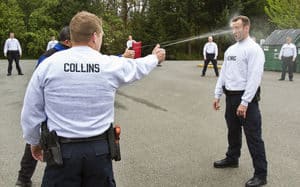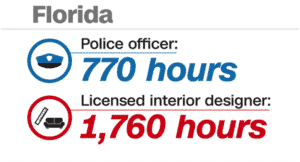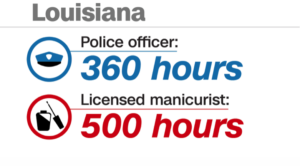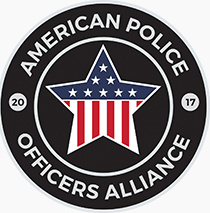As an organization dedicated to supporting police across the US we make sure we follow not only stories but statistics. We’ve covered the rise in police shootings and provocations of violence. We post stories regarding support for helping traumatized police suffering from emotional and mental health issues. But what we found when we began to look into ways to improve officer training we were surprised by what we found. Are police getting less training than expected?

In most states it actually takes more training time to become a licensed manicurist or even an interior designer.
What you say?? We had the same reaction. Many states provide less training than many other jobs that do not require carrying a firearm or apprehending criminals.
We went on a search for some statistics to prove this point. State to state we were aghast in what we found.
For instance Florida’s minimum training requirement for officers is 770 hours, but the training required to be an interior designer is much longer. Those who complete a 5-year interior design program still need to get 1,760 hours of experience before they can get a license. Those who complete a 2-year interior design program need 7,040 hours of experience.

It takes at least 900 hours to become an officer in Massachusetts. To be a licensed refrigeration technician, the state requires 1,000 hours of training if you have less than 4,000 hours of apprenticeship experience. (But we’re not talking about the guy who comes to fix your fridge at home; we’re talking about technicians who work on 10-ton refrigeration equipment.)

The minimum training requirement for Michigan police officers is 594 hours. To work with electrical signs, you’ll need 4,000 hours of experience.

Louisiana has one of the lowest minimum training requirements for entry-level police, at 360 hours. To be a licensed manicurist, you’ll need 500 hours.

These numbers are important in the sense that they point to an underlying issue that, if solved, would provide police officers with the eduction and support needed to conduct their duties effectively. Whether that’s use of firearms, deescalation procedures, cultural sensitivity or threat evaluation protocols. Police protect and serve – and save lives. They should receive not only improved academy training, but be required to participate in annual training to maintain and enhance their abilities as an officer.
Police getting less training than a manicurist is an issue we will continue to cover. Investing in police is part of the American Police Officers Alliance mission.









